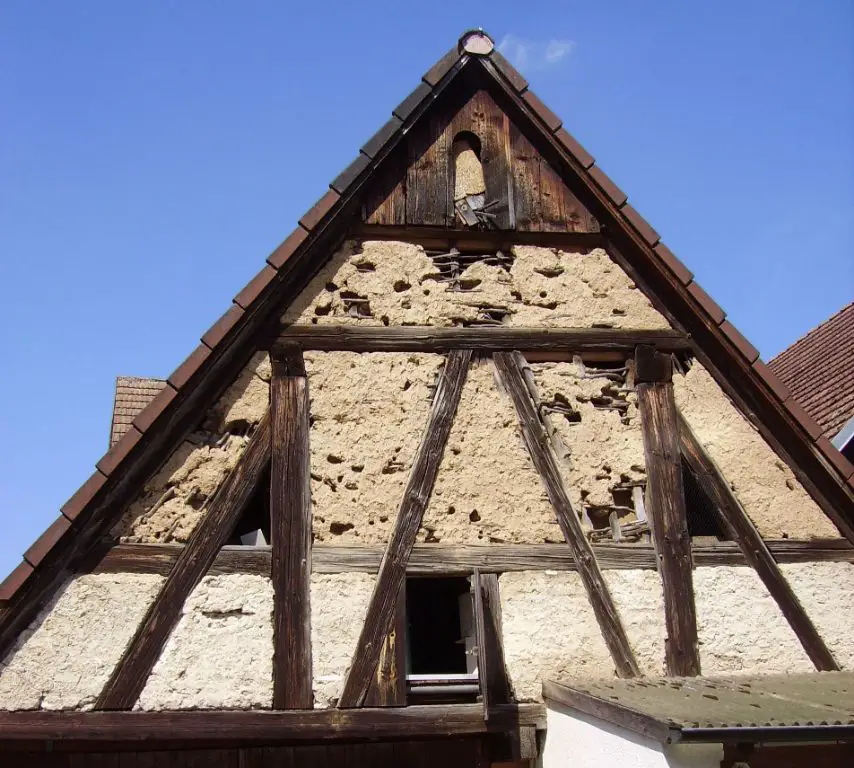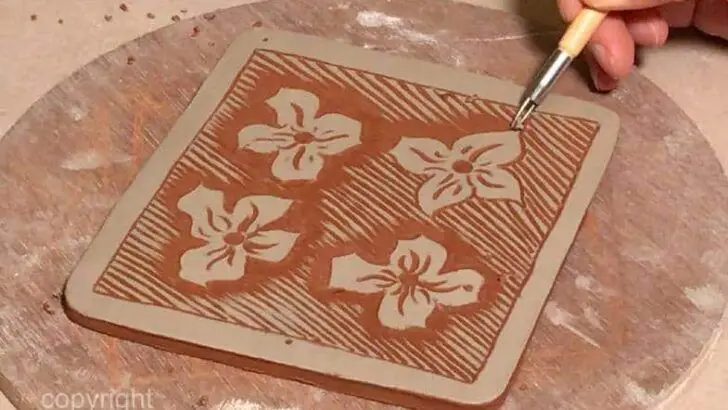What Is The Art Of Clay Building Called?
Clay building refers to the process of constructing walls, buildings, and other structures using clay-based materials. Clay is one of the oldest building materials known to humankind, with evidence of clay construction dating back to the Neolithic period over 12,000 years ago. Clay is an abundant, locally available, and energy efficient material that provides excellent thermal mass and humidity regulation in buildings.
The most common techniques of clay building include:
- Cob – Mixing clay soil with sand, straw, and water to create monolithic walls.
- Adobe – Making bricks from clay and sand which are air dried and stacked to form walls.
- Rammed Earth – Compacting mixtures of clay soil into formwork to create walls.
- Wattle and Daub – Weaving sticks between framing and covering with clay plaster.
- Clay Plaster – Applying clay as a finish coat over walls and ceilings.
Clay building has an extensive history around the world, used for vernacular architecture in places like the Middle East, Africa, Europe, and the Americas. It continues to gain popularity as a sustainable, natural building method. This article will explore the techniques, history, and modern revival of clay construction.
Clay as a Building Material
Clay has been used in construction for thousands of years thanks to its unique properties that make it an ideal building material. The key properties of clay that make it well-suited for building include:
Plasticity – Clay can be molded when wet but turns hard and structural when dried and fired, allowing it to be shaped into various forms like bricks, tiles, and more.[1]
Durability – Fired clay is very hard and durable, withclay bricks having a lifespan of over 100 years.[2]
Thermal properties – Clay has good insulating properties and helps regulate interior temperatures. The thermal mass of clay walls and floors absorbs heat during the day and releases it at night.[3]
Availability – Clay deposits are abundant worldwide, making clay a locally available and accessible material in many regions.
Sustainability – Clay is a natural material that requires little processing. Fired clay products can be recycled, and unfired clay can be reused.
The two main types of clay used in construction are:
Earthenware clays – Lower firing temperature clays used for making bricks, tiles, and ceramics.
Stoneware clays – Higher firing temperature clays that produce very hard, durable products.
When mixed with water, clay becomes plastic and can be shaped, but when dried and fired it gains compressive strength and stability, creating excellent building materials.
[1] https://www.tandfonline.com/doi/full/10.1080/24749508.2017.1361128
[2] https://www.wienerberger-building-solutions.com/en/Expertise/Our-expertise/Benefits-of-building-with-clay.html
[3] https://www.designingbuildings.co.uk/wiki/Clay%20in%20construction
Cob Building
Cob is an ancient material made of clay, sand, straw, and water that is used for building homes and structures. It originated centuries ago in England but has seen a resurgence in popularity for eco-friendly and natural home construction.
To make cob, clay soil is mixed with sand, straw, and water. The ratios can vary but a common mixture is 20% clay soil, 60% sand, and 20% straw. The straw acts as reinforcement, giving the cob strength and preventing cracking as it dries. The mixture is combined by stomping, treading, or kneading it thoroughly with bare feet or hands. Once mixed, the cob is layered by hand into monolithic walls about 24 inches thick (Source 1).
Cob has many benefits as a building material. It is extremely low cost, uses accessible natural materials, and is easy to work with. Cob structures have high thermal mass, maintaining comfortable interior temperatures. The thick walls provide natural insulation as well. Cob is flexible, durable, and naturally resistant to fire and pests. It can last hundreds of years with proper maintenance (Source 2).
However, cob does have some drawbacks. The walls are susceptible to moisture damage so a good roof and foundation are essential. Cob requires ongoing maintenance, usually an annual re-application of new cob. Buildings can take a long time to construct since the walls must be built up gradually. Cob is also not permitted in all areas due to building codes, and financing a cob home can be challenging (Source 3).
Adobe Brick Building
Adobe bricks, also known as adobe blocks, are made from sand, clay, water and sometimes other binders like lime or cement. The ingredients are mixed together to form a paste which is then molded into brick shapes and left to dry in the sun for several days until hard (Source).
Adobe bricks have been used as a building material for thousands of years, with evidence of ancient adobe structures found throughout the world. Some of the benefits of using adobe bricks for construction include (Source):
- Cheap and accessible materials – adobe bricks can be made from local soil on-site
- Energy efficient – the dense bricks provide good thermal mass and insulation
- Durable – adobe structures can last for centuries
- Sustainable – the bricks are natural, reusable and biodegradable
However, adobe construction also comes with some drawbacks (Source):
- Susceptible to water damage and erosion
- Can crack and deteriorate over time
- Low tensile strength
- Difficult to modify existing adobe structures
Overall, adobe brick building offers an affordable, energy efficient, and sustainable construction method when properly maintained and protected from moisture.
Rammed Earth Building
Rammed earth is a technique for constructing walls using the raw materials of earth, chalk, lime, or gravel. It is an ancient building method that has been revived in modern times as a sustainable construction technique.
To make rammed earth walls, forms are constructed and filled with layers of damp subsoil which are then compacted using a pneumatic tamping device. This compresses the material into a dense, hard wall. Once dried, rammed earth forms durable, natural building blocks. The walls can be left exposed for their aesthetic beauty or covered in a lime plaster for protection.
Rammed earth construction offers several benefits. The materials are inexpensive, locally available, and recyclable. The dense walls provide thermal mass, maintaining comfortable interior temperatures and reducing energy costs. They are also highly fireproof and soundproof. Studies show rammed earth structures can last hundreds of years with little maintenance (Source).
However, there are some drawbacks. Rammed earth cannot be used in all climate conditions, as exposure to heavy rain can erode the walls. Formwork is required during construction, adding time and cost. The labor-intensive process also requires specialized equipment and expertise. Cracking can occur if poorly designed or mixed.
Overall, rammed earth is praised as an sustainable, energy efficient, natural building method that creates beautiful earthen homes and structures. With careful planning and execution, rammed earth can provide durable and economical walls for centuries.
Wattle and Daub

Wattle and daub is an ancient building material used for making walls, in which a woven lattice of wooden strips called wattle is daubed with a sticky material usually made of some combination of wet soil, clay, sand, animal dung and straw. It has been used globally for thousands of years as a sustainable and natural building solution.
To construct a wattle and daub wall, first vertical wooden stakes are driven into the ground to create a framework. Then flexible branches or slats are woven between the stakes in a lattice pattern to form the wattle. Next, the daub mixture of subsoil, clay, sand, straw and sometimes dung is applied to the wattle. It is pressed into the wattle to form a stable, insulating wall surface. The daub dries and hardens to hold everything in place.
Some key benefits of wattle and daub construction are its simple and fast technique using readily available materials, natural insulation qualities, low environmental impact, and ability to expand and contract with structural movements. Drawbacks include its lack of water resistance requiring exterior protection, potential susceptibility to vermin, need for regular maintenance, and not meeting modern fireproofing standards.
Despite its primitive origins, wattle and daub is still used today for its eco-friendly properties and connection to traditional building methods.
Clay Plaster
Clay plaster is made from clay, sand, and fiber. The clay acts as a binder while the sand provides bulk and strength. Straw, horse hair, or other fibers are added to prevent cracking as the plaster dries and improves tensile strength.
Clay plaster is applied to walls and ceilings to create a decorative, natural finish. It is applied in layers using hands or trowels until the desired thickness is achieved. Each layer is allowed to dry before the next layer is added.
Some key benefits of clay plaster include:
- Made from natural materials making it environmentally friendly
- Excellent humidity regulation helping regulate moisture in a building
- Natural antibacterial and antifungal properties
- Soft, organic look and feel
Some potential drawbacks include:
- Less durable than modern plasters
- Can be prone to cracking if not properly applied
- Requires careful maintenance and repair
- Not water resistant without additives
Overall, clay plaster provides a traditional, sustainable plaster option. When properly maintained, it can last for many years, providing excellent natural humidity regulation. Its soft look and feel makes it popular in natural building projects. However, clay plaster requires careful application and maintenance compared to modern plasters.
Modern Clay Building
The use of clay as a building material has seen resurgence in recent years as part of the green building movement. While traditional techniques like cob, adobe and rammed earth are still practiced, new modern methods have also emerged that take advantage of clay’s natural properties.
One key area is the development of structural insulated panels (SIPs) made from clay. As explained by the article What are building materials?, these prefabricated panels consist of a clay mixture sandwiched between two layers of board. The result is a lightweight, energy-efficient and sustainable building material.
Clay SIPs provide excellent thermal performance. The dense clay core has low thermal conductivity, helping to reduce heat transfer through walls and roofs. This can significantly lower energy costs for heating and cooling. The modular nature of the panels also allows for faster construction times.
According to the article Cohabitat Gathering Leaflet EN, modern clay techniques like SIPs are well suited to green building in many regions. Clay is abundant, low cost and recycable. It also has a low carbon footprint compared to materials like concrete or steel. As sustainability becomes more important in construction, clay building is poised to grow.
Clay Building Around the World
Clay has been used as a building material for thousands of years in cultures around the world. Some examples of traditional clay building techniques in different regions include:
In Africa, adobe construction is common across the continent. Adobe bricks are traditionally made from sand, clay, and water mixed to a thick consistency. Once molded, the bricks are left to dry in the sun. Adobe structures like homes, granaries, and mosques can be found from Morocco to South Africa (Wikipedia, 2022).
In the Middle East, mudbrick architecture has existed since ancient Mesopotamian times. Cities and structures were built using sun-dried mudbricks, including the famous city of Jericho. Mudbricks are still used widely in places like Yemen, Saudi Arabia and parts of Iran today (Wikipedia, 2022).
In China, rammed earth technique called hangtu has been employed since the Neolithic period. Hangtu involves compacting layers of earth within wooden formwork to create walls. The Great Wall of China itself was constructed partly using rammed earth. Rammed earth is still found across northern and western China.
In Europe, wattle and daub construction has existed since at least 6000 BCE. It involves weaving sticks and branches between upright wooden posts, then packing clay or mud into the woven lattice. It was used into medieval times and remains in some parts of Europe.
In North America, Native American groups like the Navajo and Anasazi constructed cliff dwellings from adobe and cob. Early Spanish settlers also used adobe brick to build homes and missions in southwestern USA.
In South America, pre-Incan and Incan civilizations used adobe and tapial rammed earth methods extensively for walls and structures. Verbal fields and tapial architecture can still be seen at sites like Chan Chan in Peru.
The Future of Clay Building
Clay building techniques are experiencing a resurgence as people seek more sustainable and natural building methods. Recent innovations include new clay composite materials that incorporate other natural fibers like straw or hemp to increase strength and insulation abilities (Future of clay-based construction materials, 2019).
Interest in cob, adobe, rammed earth, and other clay construction methods is growing around the world. People are attracted to the low carbon footprint, breathability, durability, thermal mass, and natural aesthetic of clay buildings. Hybrid designs combine modern materials like timber framing with traditional clay wall infill for structural stability.
Adoption of clay construction is rising most rapidly in developing regions where clay is abundant and low-cost. With proper maintenance, clay structures can last for centuries. Looking ahead, clay has enormous potential as a sustainable, locally-sourced building material that reduces the carbon footprint of the construction sector (Could clay be the key to sustainable architecture?, 2021).




